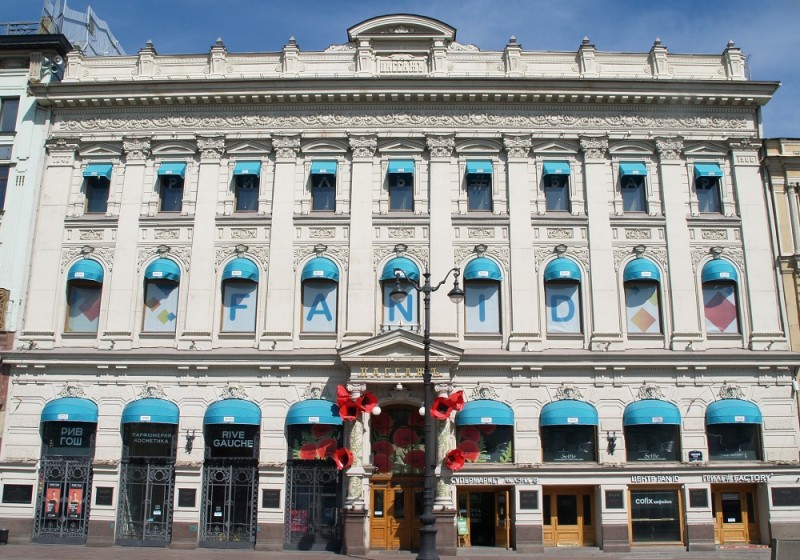The Benjamin Franklin Bridge in Philadelphia
The Benjamin Franklin Bridge – one of the most important landmarks in Philadelphia – was designed by the Polish civil engineer Rudolf Modrzejewski. The bridge connects Philadelphia, Pennsylvania with the city of Camden, New Jersey, across the Delaware River. To this day the bridge is admired for its monumental scale and solid structure, just like nearly 40 other bridges designed by Modrzejewski in the United States. Still little known in his native homeland, in America Modrzejewski (known as Ralph Modjeski) is a prominent figure, who in his lifetime received many prestigious awards.
Construction of the Benjamin Franklin Bridge
The dynamic development of Philadelphia at the beginning of the 20th century and the ensuing increase in car traffic created the need for the construction of new roads. The ferry connection between Philadelphia and Camden which had been operating until then, was no longer efficient enough.
In 1919 the inter-state Delaware River Bridge Joint Commission was established in order to find an optimal transport solution for the city. The head of the Commission, Rudolf Modrzejewski, the architect Paul Philipp Cret and engineer Leon Moissieff created an innovative design of a suspension bridge. Its construction began on 6 January 1922 and lasted for 4.5 years. The ceremonial opening on July 1, 1926 was part of the celebration of the 150th anniversary of the United States.
The longest suspension bridge
At the time of its dedication the Benjamin Franklin Bridge, with the main span of 533 m, was the longest suspension bridge in the world, though only for 3 years, because as soon as in 1929 Modrzejewski broke his own record, building the Ambassador Bridge in Detroit with the span of over 560 m. The total length of the Benjamin Franklin Bridge is 2917.86 m, and its scale is illustrated by the fact that over 70 thousand tons of steel was used for the construction. The steel ropes on which the bridge is suspended are anchored on both sides of the river in almost 110-meter-high towers cased in granite blocks. On their side planes there are reliefs with coats of arms - on the Philadelphia side there are coats of arms of the city of Philadelphia and the state of Pennsylvania, and on the other side there are coats of arms of the city of Camden and the state of New Jersey. They were made by the sculptor Léon Hermant.
The bridge carries seven lanes of traffic (originally six lanes and two tramway tracks), two tracks of the PATCO Speedline and walkways for pedestrians. The construction of the bridge cost USD 37 million. It was the most expensive public investment in that period, but it also brought great financial success and played a significant role in the economic development of the region. The traffic intensity on the newly opened route turned out to be higher than expected - it is estimated that 7.8 million cars used it in the first year of operation.
Originally known as the Delaware River Bridge, it was named after Benjamin Franklin in 1955, when the construction of another bridge connecting Philadelphia with New Jersey (the Walt Whitman Bridge) began.

fot. P. Ługowski
Ralph Modjeski
Rudolf Modrzejewski, known in the US as Ralph Modjeski, was born on 27 January 1861 in Cracow. He was the son of Gustaw Zimajer and the outstanding theatre actress Helena Modrzejewska. In 1876 he and his mother emigrated to the United States. Although he showed talent for music as a young man and received a thorough education in this field (e.g. one of his piano teachers was Ignacy Jan Paderewski), he ultimately chose a career in civil engineering. In 1878 he went to Paris, where studied at the prestigious School of Roads and Bridges and graduated top of his class in 1885. Upon his return to the United States he became an assistant in the firm of George S. Morison, an outstanding bridge constructor. He worked in various positions there until 1893, when he opened his own firm in Chicago. In 1924 the company was joined by Frank Masters, who inherited the firm after Modjeski’s death. The company still operates under the name Modjeski & Masters.

fot. Wiki Commons
In 1936 Rudolf Modrzejewski moved to Los Angeles and soon afterwards withdrew from professional activity. He died on 26 June 1940 and was buried in the Inglewood Park cemetery. His professional achievements earned him widespread recognition and he is regarded as one the most outstanding engineers of the first half of the 20th century.



